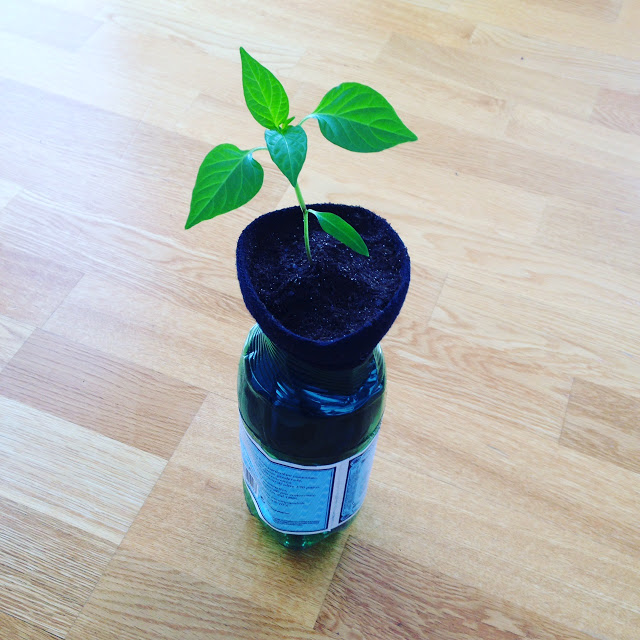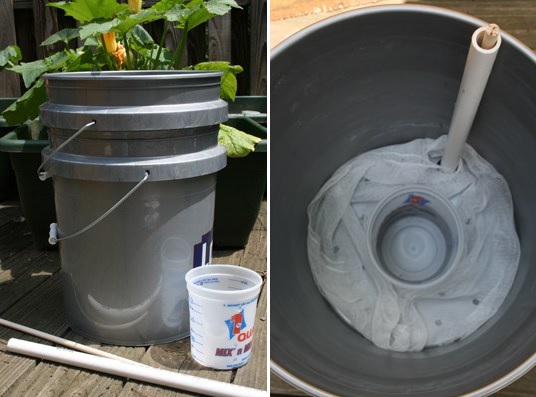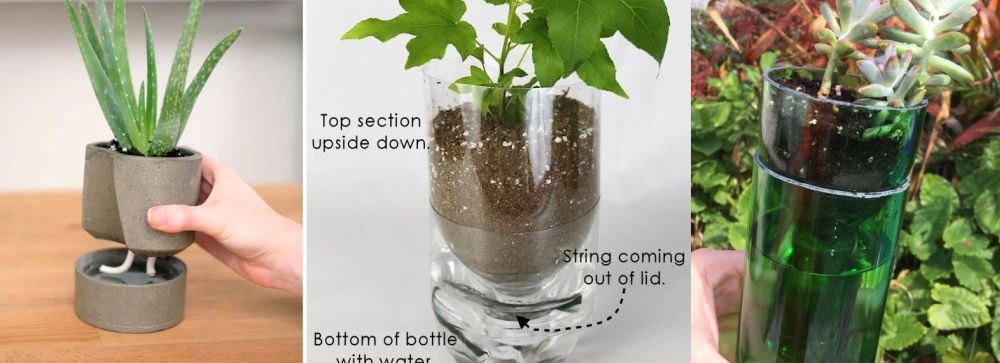20 DIY Self Watering Planters
For indoor gardeners who want to save water, a self-watering pot is ideal. The watering system has an overflow system that helps prevent root rot. The planter has a drainage hole where excess water collects at the bottom that drains the water so your plants stay healthy.
With a self-watering planter, you can feel secure knowing that your plants will receive enough water while you’re away. DIY self-watering planters are a cheap solution for maintaining your indoor greenery.
How Do Indoor Self Watering Planters Work?
A container that bills itself as “self-watering” doesn’t water itself. If you live in a hot climate, you’ll want to be careful your water doesn’t evaporate after you’ve made new indoor self-watering planters.
The system comes with a water reservoir at the bottom of the container. Water is provided by means of a soil “foot” or a fabric “wick” connected to the area where the plant is.
Plants grown in a soil foot system will send roots to the foot and take up water when necessary. The water is moved through the wick and into the soil of the main pot with the wick system, a capillary action system. Either way, they will have access to water as long as there is water in the reservoir.
20 Self Watering Planters Ideas
Here are the 20 best self-watering planters you can make by yourself. To compile this list, our editors independently research and test every item.
1. Recycled Bottle Self Watering Planter
DIY self-watering planters on our list are made from recycled bottles. The tutorial from craftyourhappiness shows how you can make such a planter out of nothing but a plastic bottle and a piece of string.
Cut the bottle into two sections, make a hole in the cap and run the string through, put a few stones and soil into the top section, add the plant and then place this upside down into the bottom half of the bottle which is filled with water.
2. Self Watering Concrete Planter
This self-watering planter has two parts: a water reservoir at the bottom and the planter at the top. A hole in the bottom features a wick. The wick absorbs water, allowing it to seep into the soil. The self-watering pots are easy to make with molds and concrete mix.
To learn more, check out the details on instructables.
3. Self Watering Downspout Planter
DIY self-watering planters pots have the same structure. The pot has a reservoir filled with water and a planter that sits on top and receives water from the reservoir through small holes or a wick. The self-watering downspout planter featured on instructables isn’t different. With this planter, remember to fill the reservoir.
4. Glass Bottle Self Watering Planter
Plastic bottles are easy to cut, but if you want a stronger self-watering planter, you might want to use a glass bottle. When cutting glass bottles, you’ll need a bottle cutter.
This project is easy, and even with this extra step. You can use a green-tinted wine bottle that would match your plants and still be heavy and sturdy enough to last for a long time.
5. Herb Bottle Gardens
DIY containers are good for herb gardens. They are small enough for windowsills and large enough for plants to have enough room for growth. The ones suggested on designsponge are made out of recycled bottles that could be beer or wine bottle tops.
6. Sports Top Water Bottle
To make it even easier to craft a self-watering planter out of a bottle, choose one that has a sports top. You won’t need to add a string to make a hole in the map. You’ll also need aquarium gravel, soil, a plant, scissors, and dried moss. Follow the instructions on thechillydog.
7. Large Self Watering Planter
After you’ve seen the ideas we’ve gathered so far, you might be wondering if there’s a way you could make a large plant pot like the one here. Check out bucolicbushwick to find out how you can convert a standard one into a self-watering one.
8. Outdoor Self Watering Planter
If you need an industrial-size self-watering mechanism for outdoor use, a large plastic container would be just the thing. When it rains, all you do is move it into your garage. If you like the idea of a large planter with a big reservoir, then watch this tutorial at frugalupstate.
9. Bottle Self Watering Planter
There’s more than one way to connect a pot to a water reservoir. The idea with the bottle planter with a hole in the cap and a wick is simple. However, there’s another strategy that you might want to try. Check out this idea from instructables.
10. Self Watering Planter Pot
Another tutorial showing you how to build one can be found on thehandygardener. The supplies needed include a foam box with no holes and with a lid, PVC pipe, saw, scissors, waterproof tape, and a stick. The stick serves as a water level indicator.
11. Water Cooler Bottle
The idea of up-cycling water bottles is beneficial because you can shape them depending on the size of the bottle.
If you need extra large self-watering planters, then five-gallon office water coolers would provide your plants with enough water during extended vacations. You’ll need a large water reservoir so your plants will never run out of water.
The tutorial on bucolicbushwick suggests using a tomato cage as a support structure.
12. Cheap Self Watering Planter
With large pots, you can use buckets instead of big bottles. According to the tutorial on reallifeathome you can make one using two paint buckets, a paint mixing container, PVC pipe, dowel, and a drill. You’ll need coffee filters or a cheesecloth to cover the holes at the bottom of the bucket so the soil doesn’t block them.
13. Customized Self Watering Planter
You can use any type of pot or container to build one. It’s a matter of adjusting your design to the supplies and tools. Check out littlevictorian to find out how this process works.
14. Self Watering Container Garden
It’s possible to build this from almost anything. Check out this project from verticalveg. The planters are made of wood boxes, plastic sheets, pipes, and containers.
They provide access to water so your plants, herbs, and succulents will have plenty to drink. Plus, your roots will always stay hydrated.
15. Self Watering Planters for Tomatoes
Thanks to designs like this one you can grow vegetables without a garden. You can make one like this for less than $10. All you will need is a towel, two containers, and two sponges. You can find all the details plus instructions and tips in this Youtube video tutorial.
16. Mini Self Watering Wicking Planter Garden
A self wicking planter is for serious green thumbs who are limited on space. This wicking bed container garden is a self-watering indoor garden that’s easy to make. You can follow this tutorial on YouTube for more details.
The system helps save water, provides enough moisture, and hydrates your roots. This would be a fun DIY project for your teenage children.
More than anything, it’s the ideal self-watering system for apartment dwellers who like a touch of green inside their homes. Your new garden setup should last a few years, however, you’ll need to replace the bottom fabric at least once a year.
17. Plastic Buckets As Self Watering Containers
You’ll need two buckets and a Styrofoam cup to form the base of this container. You can find cheap buckets at crestonesolarschool or a local grocery store. Try to get two different sizes and depths so you can make the one pictured here.
The shorter one will hold the plant, and the larger one will be designated for your water reserve. The Styrofoam cup should be large if you have a deep water reservoir but can be small if it’s shallow.
This is a fun and easy project to create, and it’s a great choice for anyone going away for an extended period to keep your plants healthy.
18. Self Watering Garden With Air Conditioner
For an eco-friendly option that uses your air conditioner’s recycled water, check out this garden from instructables. It will lower water expenses, plus you won’t have to worry about watering after everything is set up.
19. One Cut Soda Bottle Self Watering Planter
For this simple DIY project, you’ll need a 2-liter bottle and an old sock. It requires one cut in the bottle, and then push the end of the sock through the bottleneck.
The elastic band in the sock will keep it in place. It’s ideal for indoor use, as you’ll fill the sock with dirt and add a plant of your choice as described here: planteatrepeat.
20. Self Watering Planter With Any Container
Use a container of your choice to create this one from thekitchengarten. Options include a Rubbermaid tub or a decorative container if you want to make this a focal point.
You could use a large container, whether designed for plants or not. If you grew salad leaves, for examples, within weeks you could watch them bloom.
Frequently Asked Questions (FAQ)FAQ
How Do Self Watering Hanging Baskets Work?
Self-watering hanging baskets are like others. You’ll need a growing bed, potting soil, water reservoir, and a wicking system that puts dirt in contact with water. The baskets use capillary action or “wicking.” When the roots absorb water, the soil wicks up to maintain moisture.
Do Self Watering Planters Attract Mosquitoes?
Yes, they do. They’re the ideal breeding grounds for mosquitoes. Because of their constant moist conditions, it’s easier for them to lay eggs. To prevent mosquitoes, flush the water out every few days.
What Happens When The Reservoir Dries Out?
If you don’t keep water in the plant pot reservoir it will cause the wicking system to dry out and it won’t work when you refill the reservoir. If you allow the reservoir to dry, you will need to water it from the top, soaking the dirt with the wicking system at the bottom of the plant pot.
Can You Put Rocks At The Bottom Of A Self Watering Planter?
Gravel should not be used to line the bottom. The mechanism allows water to travel to the plant roots when needed, rather than when the pot is dry. This is known as capillary action. Those who think that rock layers on top of fabric wicks should know they will take up space in the reservoir.























